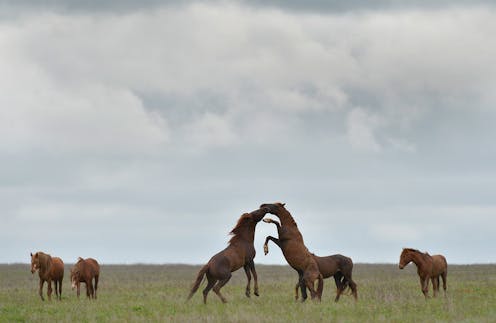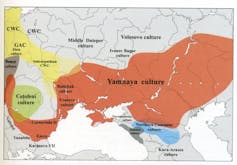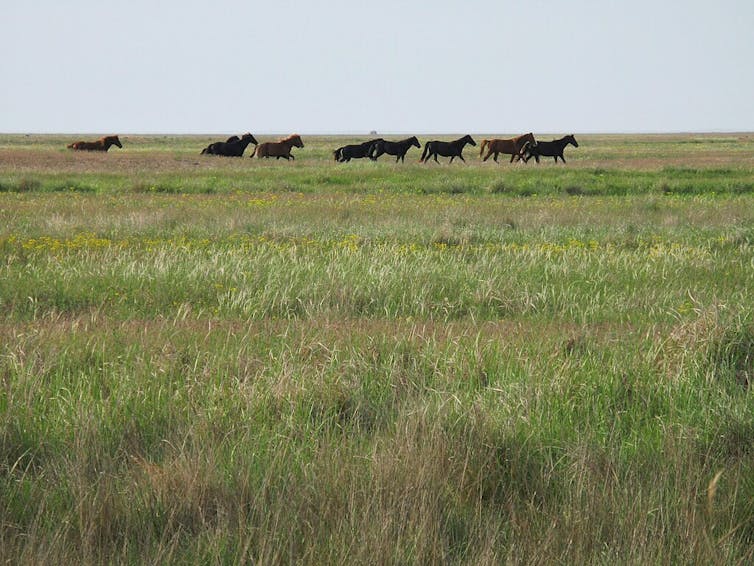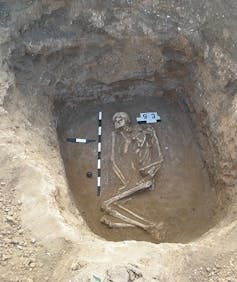
The genetic predisposition to suffering from multiple sclerosis (MS) is closely linked to historical migration patterns, and to our ancestors’ lifestyles. Specifically, MS is linked to the genetic contributions made by nomadic populations who reached Western Europe 5000 years ago from the Siberian Steppe.
Human genomes vary by 0.1%, and this difference is often the result of responses to environmental pressures. When faced with epidemic diseases, for instance, natural selection means the genetic variants that provide individual resistance to pathogens are the ones that survive. These markers are, in terms of population genetics, “positively selected”.
However, variants that are beneficial in one situation can be counterproductive in another. Immune systems – the first line of defence against harmful viruses and bacteria – tend to be involved in such a mismatch between genetics and environment.
In some cases, immune systems are unable to distinguish between the body’s own cells and external ones, leading them to destroy tissues. This is what causes autoimmune diseases such as rheumatoid arthritis, lupus or MS.
In the case of MS, the immune system attacks the insulating covers of nerve fibres in the brain and spinal cord. Until recently, the cause of MS was unknown, as were the causes of different distributions among the world’s population. However, new hypotheses have been proposed that may shine a light on these mysteries.
MS is more common in Northern Europe
Two sources of information can help us understand when, where and how MS originated. The first is the disease’s prevalence across continental Europe: there are higher concentrations of MS in the north and lower ones in the south. The second comes from palaeogenomics, the study of DNA recovered from ancient remains. Research in this field suggests that the European gene pool is made up of three major lineages.
Leer más: Early humans reached northwest Europe 45,000 years ago, new research shows
The base of the European genome is linked to the first European settlers: hunter gatherers who arrived in Western Europe around 45,000 years ago. Later, between 8000 and 6000 years ago, Neolithic populations from Anatolia migrated into the region, mixing with the hunter gatherer genome. These groups were linked to the domestication of plants and animals.

To these two previous genomes we can add the Yamnaya migration. The Yamnaya was made up of pastoralist groups from the Siberian Pontic Steppes who dispersed across Eurasia in the Bronze Age around 5000 years ago.
Europeans are therefore a complex mixture – in varying proportions – of these three gene pools.
Nomadic ancestors
A recent study based on analysis of ancient DNA has found a direct relationship between the genetic risk of developing MS and an individual’s proportion of Yamnaya ancestry. Like the incidence of MS, the Yamnaya genome is more prevalent in northern than southern Europe.
The contribution of these nomadic pastoralists to the European cultural and genetic ancestry had been overlooked by archaeologists until palaeogeneticists detected traces of them in Bronze Age populations.
They were hierarchical, patrilineal and patriarchal groups who introduced, among other innovations, the domestication of horses, the use of carriages, and Indo-European languages to Europe.
Leer más: Indo-European languages: new study reconciles two dominant hypotheses about their origin
Their arrival in Western Europe also brought about the contribution of new genetic variants that had been selected to suit lifestyles based on pastoralism and animal husbandry.

Coexistence with cattle meant access to milk, an exceptional dietary source of energy. This in turn led to the selection of genetic variants that allowed adults to properly digest lactose.
Another interesting finding is the presence of certain pathogens – such as the bacteria Yersina pestis, which causes the plague – among the remains recovered from Siberian pastoral groups.
A hypersensitive immune system

We can therefore explain the relationship between Yamnaya ancestry and MS, as contact with the pathogens carried by livestock caused the Yamnaya’s immune systems to adapt. They became hypersensitive to infections, which sometimes led their immune systems to confuse their own cells with those of others, resulting in the development of autoimmune diseases.
It is perhaps surprising to learn that some characteristics of modern day humans – such as the ability to digest lactose as adults, resistance to infectious diseases, or the development of autoimmune diseases – are inherited from a remote past that developed in the Pontic steppes. This discovery also has potential benefits in the field of medicine, such as in allocating healthcare resources to regions with a higher genetic predisposition to developing MS. This practical application would, however, require further, more focused research.
Antonio González-Martín no recibe salario, ni ejerce labores de consultoría, ni posee acciones, ni recibe financiación de ninguna compañía u organización que pueda obtener beneficio de este artículo, y ha declarado carecer de vínculos relevantes más allá del cargo académico citado.
This article was originally published on The Conversation. Read the original article.







